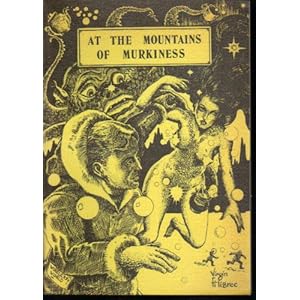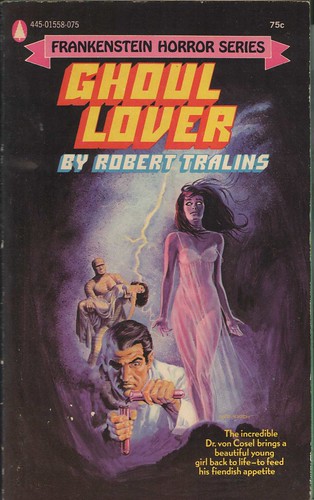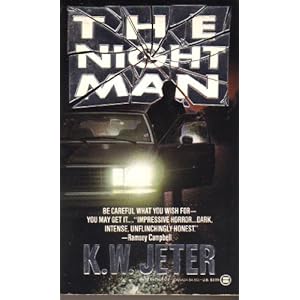
AT THE MOUNTAINS OF MURKINESS and other stories, ed. George Locke
Ferret Fantasy, Ltd. released this book in a limitation of 1000 copies, in 1973. It's scarce enough that people are unlikely to happen across a copy, but not so scarce that it can't be purchased for a comparatively low price. This is good, because the book is worth buying.
It isn't a particularly long book, and in no way is it as worth hunting as it used to be. That's because the title story, long out of print, has been reprinted by Chaosium for their Antarkos Cycle book. It's a parody of At the Mountains of Madness by H.P. Lovecraft, written by Arthur C. Clarke.
Yes, Arthur C. Clarke, before the "Sir" and when he was only recently past drinking age. One of his first published stories, in a fan magazine, was this silly but witty spoof of not just the story, but Lovecraftean fiction.
The story, written in 1940, is the newest story in the collection. Other pieces parody Fergus Hume, Sir Arthur Conan Doyle, Arthur Machen, H. Rider Haggard, H.G. Wells, and Jules Verne. Most are from the turn of the century, and all are enjoyable pokes at famous stories.
The greatest flaw of the book is its brevity. The book runs to 108 pages, which should be fine for a small press trade paperback; unfortunately the publisher uses large type, wide spacing, and wide margins to pad the book. Anyone but the slowest of readers is likely to finish the final story and wonder where the remainder of the book is. This is my only real concern with the book; the stories are solid and production values are high and a nice copy can be purchased for about the same price as a new hardcover... not common for a nearly 40 year old limited edition.
Again, though: Arthur C. Clarke sending up Lovecraft.
Three stars out of five.

DEATH AND THE SPIDER by Grant Stockbridge
In January, 1942, The Spider adventure magazine celebrated its hundredth issue with a story in which the Spider was fated to die, as prophecied by the Tibetian mystic who had taught him many of his tricks.
The Spider was an attempt by a rival magazine company to capitalize on the popularity of The Shadow. It was somewhat successful; although the character never achieved Shadow or Doc Savage levels of fame, he has become a favorite of some and is on the highest tier of the second-string pulp adventurers. He was, as was common at the time, a millionaire who secretly fought crime under an alias and after having received special mystical training. He was better than other men... slightly faster, slightly stronger, slightly more agile and quicker to respond. He had a gnarled, hideous mask that was somehow convincing enough to deceive others into thinking it was his true face, but which could be attached or removed almost instantaneously. He was a marksman for whom any military would have traded a tank. In other words, he was a typical pulp action hero, albeit flashier than most.
This was a defining issue; it was considered key enough to be chosen as one of the attempted update and relaunch in the early 1970s (where the Spider was somehow transformed on the cover to be a Mack Bolan clone... blonde hair, muscles, and a turtleneck... in complete contrast to the interior description.) It has one of Spider's most powerful nemeses, and a lot of action. What it does not have is a reasonable storyline.
He's faced with someone who is capable of creating illusions, moving without being seen and triggering homicidal rage in otherwise normal people. His teacher returns for this issue, and acts to block some of the effects from the Spider. This is fine, within the context of the story.
Where it fails is in the villain's motivation and activity. Sometimes these powers are directed, sometimes they are not. The subplots hinted at earlier are never resolved. The antagonist's actions often show appallingly poor planning.
On the up side, there are some great horror elements for the horror fan. Outside of the typical adventure story gunplay there are slit throats, a crazed ax murderer, a black mass and a berserker slaughter with knives. This is not particularly unusual for the Spider, which is a reason why he has fans among horror readers.
The hero can be fun, and it is worth hunting down many of his adventures. Unfortunately, this is not one of them.
Two out of Five.

GHOUL LOVER by Robert Tralins
The 1970s was a good decade for authors who wanted to write horror series. One of those series was The Frankenstein Horror Series, which despite the title often had nothing to do with Frankenstein. Instead, each book focused on a classic horror trope and assigned it to a competent author. Authors for the series included Frank Belknap Long, Paul I. Fairman, and Otto Binder, all of whom had established a solid reputation as science fiction and fantasy authors.
In this case, the central character was the mad scientist. The story tells the history of Count von Cosel, an amazing prodigy who is visited by visions of a beautiful woman. He is the reincarnation of a brilliant ancestor and dabbles in both magic and the hard sciences. Because the girl exists beyond space and time, she is able to tell him the general location when and where she will be born in the future, so he may be ready to meet her when she reaches an appropriate age.
Wanting to spend eternity with her, the Doctor and his assistant spend their time attempting to create the perfect serum to prolong or resurrect life. This is where the book fails; in attempting to move the plot, the completely brilliant Doctor takes a set of completely stupid actions.
Normally, I would criticize this more, because it's typically a sign of a lazy writer; rather than shift their expected ending a little, they'll treat their outline as if it were set in stone. In this case, however, I grant the author more leeway.
While not referenced anywhere in the book, this story is based on a real event. Dr. von Cosel, who obsesses over Elena Hoyos in the book, is inspired by Dr. Carl von Cosel, a.k.a. Carl Tanzler, a.k.a. Georg Karl Tanzler. Elena Hoyos is inspired by the real life Elena Hoyos. The doctor's obsessive treatment is inspired by the real thing. The doctor's graverobbing and seven year necrophiliac relationship with the corpse is inspired by the same incident in the real world.
That said, while the real story is disturbing, the book is less so. By inserting a supernatural element into a true life horror story, and by spending the majority of the book tracking von Cosel's life, the author keeps the reader from developing any real sympathy for the Doctor's victims. An interesting (if racially offensive) character developed early in the story is jettisoned. The book simply occasionally read as if it were more of a movie storyboard or book outline than a novel, and as such it suffers from the worst affliction of any horror book; it's not remotely disturbing or unsettling.
Three stars out of five.

THE NIGHT MAN by K.W. Jeter
This novel was written in 1989 during the height of the splatterpunk ascendancy, and it's described in those terms on the back cover copy. It's not a splatterpunk novel. At least half of the violence in the book is performed in dreams, both regular and daydreams, with no result other than to disturb the dreamer.
Instead, the novel is a character study, alternating between an abused child and a night worker at a juvenile detention facility. We are introduced to both of them, focusing most on the child, Steven. He has a bad home life, and the prospects for escaping abuse or living a normal life seem bleak. His mother is a drunk, his father is missing, his sister is a tramp and her boyfriend is a local hero because he's on the small town football team... even though the team typically loses.
The child, Stephen, has had his ego crushed and merely wants to hide. Jeter shows us the resilience of childhood even as he lays out the nightmare this kid is living through. The author has a very deft touch, creating a completely believable set of characters. As with many of his novels, there are no truly heroic people, just some who are flawed and some who are repugnant. In his science fiction, this can be a problem, as the novels have a bleakness; in horror, the book is well served.
Four stars out of five.
--Bill Lindblad
